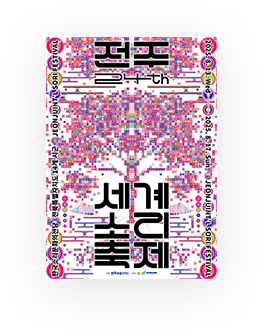d-day
D
+
291


2025. 8. 13. Wed - 2025. 8. 17. Sun

The essential of Sanjo Conveyed by Two Gayageum Masters
Let us Dive into the World of Sanjo Deeply!
“Sanjo Night,” Jeonju International Sori Festival’s branded performance-series, provides a series of stages in which the musical value of sanjo with its unique artistry can be felt.
“To hear ”Seong Geumyeon-style“ sanjo played by Master Ji Seongja and ”Ham Dongjeongweol-style“ sanjo played by Master Jeong Hoecheon on a single stage will be a special historical moment in the history of gayageum sanjo performance. If Master Hwang Byungki were alive, I think, he would say, ”It is the luckiest of lucks to appreciate and compare the ”two most beautiful flowers,“ that is, Ji Seongja’s Seong Geumyeon-style sanjo and Jeong Hoe-cheon’s Ham Dongjeongweol-style sanjo.”“ (Written by Yoon Junggang, Traditional Music Critic)
Seong Geumyeon-style Gayagem Sanjo
“Seong Geumyeon-style Gayageum Sanjo” is a pioneering instrumental solo piece. She was the first to be designated as the holder of an Intangible Cultural Heritage No.23. The piece begins with a powerful and reverent mood, and the tonal changes are colorful and distinct in it. Its melodies have a clear beginnings and ends, and the depth of vibrato and improvisation that can be added and subtracted by instrumentalists’ styles are emphasized. Tensions are created through the percussive nature of stringed instruments are given between beats, which constructing a delicate, spectacle, cheerful as well as grandiose mood. Especially, the gyemeon-scale-based mournful melody, and the jaunty gyeongdeureum (lit. a musical style of the “capital”) tune of the gutgeori section adds a touch of tasteness.
Choi Oksan-school Hamdong Jeongweol-style Gayageum Sanjo
“Hamdong Jeongwol-style Gayageum Sanjo” was handed down to Ham Dongjeongwol from Choi Oksan, who is believed to study under Master Kim Changjo of Yeongam (of Jeollanam-do). It constists of the sections of dasereum, jinyangjo, jungmori, jungjungmori, neuzeun (slow) jajinmori, jajinmori, and hwimori. In Jinyagjo part, in addition to wujo, pyeonjo, and gyemyeonjo tunes, bonghwangjo that depicts the appearance of a phoenix appears. This tune is rarely found in other styles of gayageum sanjo. Unique melodies of pyeonggyemyeon, byeongyemyeon, and saengsamcheon appear here as well. Also unique is the gyeongdeureum tune in the jungmori part as well as the jungjungmori section composed only with wujo-scale. The section of slow jajinmori, which best expresses the melodic characteristics of this sanjo style, has a complex structure in which the jungjungmori jangdan pattern is changed into the jajinmori pattern. In particular, the colorful progressions created between the melodies transposed down to the minor fourth and the percussive accompaniment that connects those melodies. The melodies of “rainfall,” “doseop (half-singing-type vocal part)” and “horse-running” are also unique. The sanjo can be also characterized by its refined melody and vocal-play based on deep vibrato-related techniques.